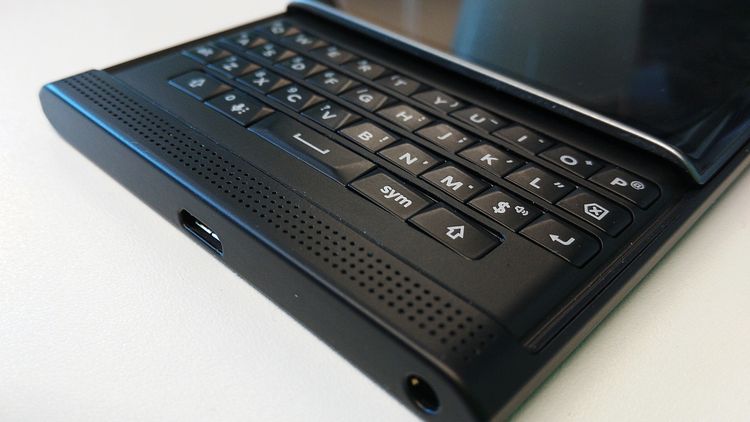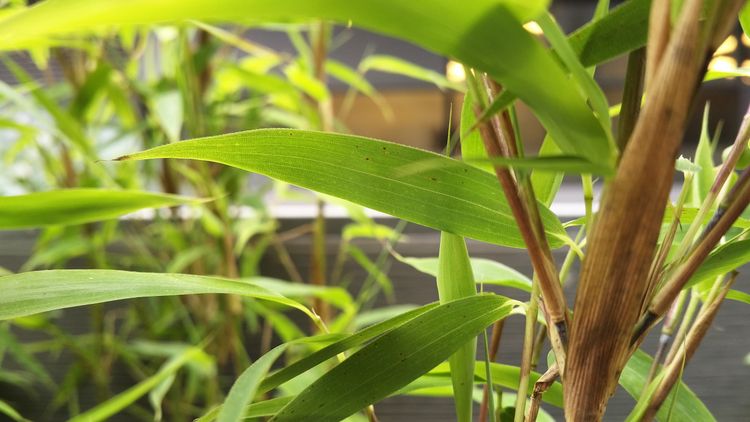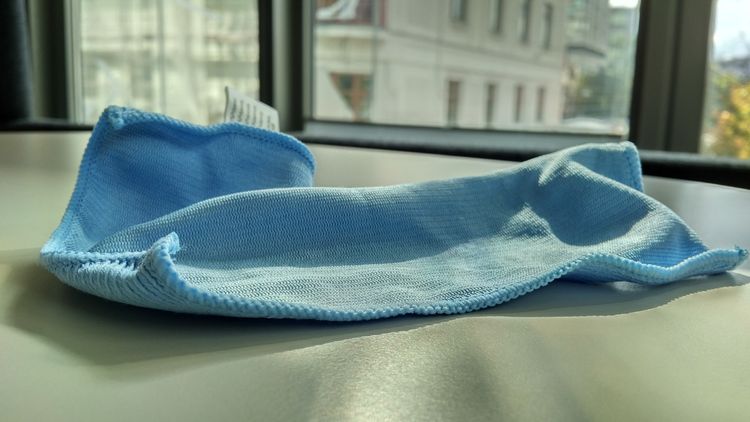There have been many hints and rumors along the way until insiders finally spilled the beans: Blackberry, the smartphone pioneer formerly known as RIM, is indeed building an Android-powered smartphone. Its called "Priv" and comes, of course, with a physical keyboard.
The device is focussed on privacy protection – hence the name – but should also satisfy with powerful hardware. The WebStandard managed to get hold of a Priv to do a short hands-on.
Disclaimer
First things first: Keep in mind that this article does not cover a finalized product, but a preproduction unit. This means that all impressions given in this text should be taken with a pinch of salt. While the hardware can be considered mostly finalized, a lot can still change in terms of software, as the device is expected to launch in early 2016.


Specifications
The Priv presents itself with a 5.4 inch curved display. The curves, however, are by far not as distinct as you see them on Samsung's Galaxy Edge devices. The panel runs a 2K resolution (2.560 x 1.440 px). The extremely high pixel density of 544 PPI matters in terms of VR, but during daily use its impossible to spot a difference to regular Full HD panels with the naked eye.
The Android 5.1 system is powered by a Snapdragon 808, which you can also find in the LG G4. Its accompanied by 3 gig of RAM and 32 gig of onboard memory, 22 of which are free for use. There is also a microSD slot in case you need some additional space. The phone supports modern standards like LTE, Bluetooth 4.1 and NFC. The microUSB port, used for charging and data transfer, however only complies with the rather old USB 2.0 specification.
There also is a 18 MP main camera with a Schneider-Kreuznach blend, that slightly protrudes from the otherwise flat backside. Part of the game is also a dual-tone flash module. The front camera delivers 5 MP.

For two-handed use
With a 5.4 inch display the Blackberry Priv is already a pretty large devices and hardly suitable for one handed use. Since its "chin", despite the lack of physical navigation buttons, isn't too slim either, most interactions can only be done with two hands.
The phone's backside seems to be made of a mixed material which includes kevlar. It feels very rubbery and far from premium, yet on the other hand you easily can keep a firm grip on the device.
The keyboard is integrated via a slider mechanism on the lower side. It gives a very sturdy impression. The little gap between keyboard and the actual body, however, tends to accumulate dust and dirt.
The display delivers vivid colors and good contrast and holds it ground against highly regarded devices like the LG G4. Blackberry is trying to make some use of the curves, for example by having them show the battery charge – though this feature did not yet work.

On the left side of the body you can find the power button, which is a little hard to reach. On the right there are two buttons for changing the volume along with a smaller one in the middle, which for now only makes the notification area pop up, even when running the camera. We'll have to wait and see if Blackberry comes up with additional functions.
Powerful, but with lags
Running the Antutu (32 bits) allround benchmark shows the hardware's potencial. A score of around 46.000 places the Priv just in front of the HTC M8 and OnePlus One from 2014. Most of the time the phone reacts quickly on any input, but every now and then there are little stutterings or even noticeable lags. This is most likely caused by a lack of optimization, so there is a good chance that Blackberry will get this fixed by the time the Priv launches.
The system UI resembles pure Android for most parts. The only noticeable change at first glance is an additional navigation button which brings up the selection menu for the onscreen keyboard. For now, there is no benefit to this, as the Priv recognizes whenever the hardware keyboard is in use.

Keyboard
The keyboard, however, has its ups and downs. Since the keys are arranged like little scales, its easy to distinguish them by touch. But Since they are pretty small and already trigger under light pressure, it might take a good while to get used to them and be more efficient than with an onscreen solution.
The review unit was equipped with a QWERTY layout, which is used mostly in English speaking countries. Depending on the markets which Blackberry wants to cover, you can expect the company to produce variants with layouts for other regions.
Apps
When setting up the priv you can import user data from iPhones, other Android devices as well as from Blackberry OS phones (version 5.0+). Blackberry has preinstalled some own apps, like the Blackberry messenger for secure communication. Part of the privacy promise is also an app called "safe guard", which basically analyzes your current security-relevant settings and provides a score.
We also found a number of Google apps on the system, including Gmail, Chrome, Play Music and of course the Play Store. There are also alternative default apps by Blackberry, like a contact manager which coexists with the stock Android one. The onscreen keyboard was completely replaced with a new app, which sadly lacks features like Swipe input.

Camera, audio, reception
The camera left a good, but not overwhelming, impression. Under daylight it performs as a fast snapper, providing pictures with good detail and realistic colors that seem to be a tad too dark. Once dealing with artificial light the shutter speed became noticeably slower, despite the optical image stabilization system. A phenomenon that caused visible impact in terms of picture quality.
Audio quality during calls and music listening is decent. And so is signal strength in terms of GSM and Wi-Fi. As the hands-on lasted only a short time, we cannot provide reliable statements regarding the battery runtime. Even under heavy usage the battery meter dropped only from 100 to 85 during 2,5 hours with the display set to 75 percent brightness. Extrapolating this experience while considering a more average kind of usage, the Priv should be well able to provide power for 1 to 1,5 days per charge.

Preliminary conclusion
Will Blackberry make a comeback as a relevant player on the smartphone market? Probably not. The company has failed to get a hold of the mass market with BB OS 10. And the Android-powered Priv is tailored to a specific market segment rather than meant to attract a broad audience.
And this segment are business users who will profit from the keyboard and probably are already part of Blackberry's ecosystem. They can now access the services they're used to while having much more apps at their disposal in Google's Play Store.
If Blackberry wishes to appeal to other consumers, the Priv will have to enter the market at a low price point. Which is something that, most likely, is not going to happen (Georg Pichler, October 11, 2015)
Camera shots




